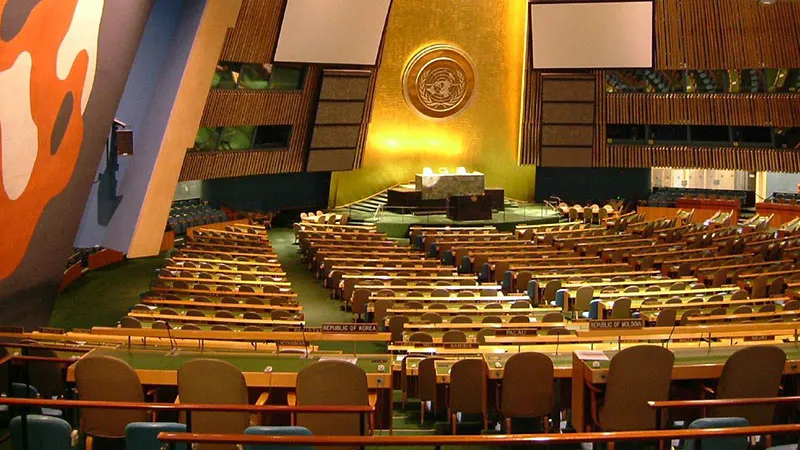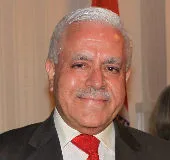-
CENTRES
Progammes & Centres
Location
Role of media, civil society, political parties and business are significant in addition to Central and State governments in dousing the flames in Kashmir.

Kashmir has been under uninterrupted curfew since more than five weeks. Large pockets in the Kashmir Valley have been on the boil from July 8 when Hizbul Mujahideen terrorist Burhan Wani was gunned down by security forces in Kokernag in the Anantnag district. Stone throwing and pelting, burning of government vehicles, destruction of police stations and schools and other acts of violence and carnage have continued with periodic ups and downs. Around 60 people, including civilians and security forces have been killed. Several thousand have been injured. More than a hundred have been blinded due to pellet bullets used by security forces. Schools, colleges and universities have remained closed over this period. This has resulted in a marked escalation of disaffection and discontentment, especially amongst the youth who have been spearheading assaults and attacks against the establishment.
At the beginning of this oscillating wave of violence, it was felt that it would not be too difficult to quell this spate of clashes as the Valley had witnessed such events in the past — in 2008 and in 2010. More than 100 people were killed in incidents in 2010. It has started becoming increasingly clear that this assessment is off the mark. The current chain of rampage and disturbances is different from previous ones, not only in terms of its ferocity and fury, but also because the element of ''fear'' of security forces that is fast diminishing among the youth.
To deal with the continuing problem, there are several useful ideas and suggestions that have emerged in recent days.
Although the role of Central and State governments is pivotal and decisive in delineating strategies to douse the flames, role of media, civil society, political parties and business are no less significant.
It is evident that a multi-pronged approach with active collaboration of all stakeholders needs to be put into action without delay.
It is clear that Pakistan has played a most destructive role in fomenting terrorism, not only in Jammu and Kashmir (J&K), but also in rest of the country. While India has been able to formulate an appropriate strategy to deal with Pakistan's acts of cross-border violation by pounding at its positions across the border with even greater force, India has still not been able to construct a suitable response to blunt Pakistan's policy of training, financing and infiltrating terrorists from across the border to carry out vicious acts of killing in J&K and other parts of the country. India will have to evolve a suitable game-plan to defeat these attacks. Additionally, there must be pain inflicted on Pakistan for the unacceptable price of bloodshed it is causing in India. At the international level, Pakistan's violation of human rights in Pakistan Occupied Kashmir (POK) — the territory illegally occupied — and Baluchistan, need to be highlighted pro-actively. While Prime Minister Modi instructed the External Affairs Ministry to work in this direction, he himself fired the first salvo by referring to the seriousness of this issue in his Independence Day address on August 15.
What makes the present conflagration in Kashmir different from the earlier ones is that the attacks are not being led only by the separatist Hurriyat leadership, or Pakistan based terrorist group Hizbul Mujahideen, but mostly, by a disparate set of young people who are inspired by the exclusivist, parochial, conservative Wahhabi ideology of the Islamic State. Their intent is to Islamise Kashmir, destroy its inclusive, pluralistic, tolerant Sufi culture, and exterminate all those who are opposed to them. Their objective is to create another Afghanistan, Iraq or Syria in these pristine lands. In this task, they are actively abetted by Pakistani security agencies who are ready to help and support all forces which can spread mayhem and destruction in India. This segment can be dealt with in the short term through the state apparatus and security machinery, and in the long term, by promoting an ideology of peace, love and compassion to replace the narrative of hatred, hostility and animosity propagated by them. Sources of extremist and Wahhabi thought like the mosques and madrasas need to be kept under close supervision, control and check so that rabid and vicious voices don't continue to poison the minds of the youth. Young women have to be given a special place in the resurgence of normal, peaceful, healthy and harmonious conditions in the Valley. The fact that this disparate set of radicalised youth is leaderless, can act as a double edged sword for law enforcing agencies. Security forces and government should use this facet as an asset to blunt attacks by these terrorists and subdue them.
In addition to dealing with the radicalised youth, India needs to appropriately handle the segment of misguided youth who are intelligent to realise that neither Pakistan nor azaadi offers them the salvation they are looking for. The youth would be happy to have laptops and cricket bats in their hands in place of stones and guns. They have resorted to the path of violence because of lack of any viable option. This becomes most evident during times of violence as is the case now, or even during periods of relative lull when adequate opportunities for skill development, employment are not available.
< style="line-height: 1.5">The youth would be happy to have laptops and cricket bats in their hands in place of stones and guns.< style="line-height: 1.5">
< style="line-height: 1.5">Kashmir is a stark case of misgovernance, both at the State and Central level over the last 70 years. It is well known that J&K receives the highest per capita financial support and assistance for economic and infrastructure development from the Centre. Unfortunately, much of these resources have gone to line the pockets of the political class and bureaucracy and very little to provide appropriate physical and social infrastructure in terms of health, education, roads, railway system and others. This will need to change if long term peace, security and prosperity are to be fostered. Greater responsibility for this devolves upon the State Government rather than the Centre.
 The Shah-e-Hamdan shrine in Srinagar. Photo: Mike Prince/CC BY 2.0
The Shah-e-Hamdan shrine in Srinagar. Photo: Mike Prince/CC BY 2.0Kashmiri youth today has scant knowledge, if at all, about the pluralistic, syncretic and all inclusive culture and traditions of the state. They have been exposed only to the culture of hatred, revenge and violence. This needs to be corrected. The youth need to be informed in schools, and outside, that they are inheritors of a rich, ancient legacy in which people of different ethnicity, caste, religion, and pursuits that live peacefully with each other. Their mindset and attitude needs to be changed through process of value education, sports, music, culture, debates, healthy entertainment and extracurricular activities.
Kashmiri youth today has scant knowledge, if at all, about the pluralistic, syncretic and all inclusive culture and traditions of the state.
In all discussions on Kashmir, issues of democracy deficit and greater devolution of power and autonomy are raised. It is well recognised that J&K has much greater autonomy than most, if not by all the states of the country. It is a reflection of misgovernance and corruption that fruits of special powers are not reaching the common people. There is an urgent need for J&K leaders and administration to become more responsive to the needs and aspirations of the people.
Spurred by TRPs and circulation figures, the media, both print and electronic, both local and national, have been playing a largely negative role. It needs to become a potent and effective vehicle for promoting dialogue as well as for guiding the youth to move towards education, work and service.
Periods of relative peace in different parts of J&K need to be taken full advantage of, to reach out to disaffected segments of the local population and formulate long term solutions, to deal with the egregious situation. State and Central authorities should attend to the bruised hearts and minds of the young with compassion and generosity and not with a heavy hand.
The situation is difficult and complex, but not beyond redemption. Everywhere in conflict zones in the world, there has been a tussle between peace and development. What comes first — peace or development? The answer is that both of them need to be taken up in parallel. It will be self-defeating if the Government were to wait for peace and security to be restored before embarking on any development initiative. Both will need to go hand in hand, supporting and reinforcing each other.
The issue of return of Kashmiri Pandits has been engaging the minds of decision makers for years. This needs to be made a matter of priority. Presence of Kashmiri Pandits in the heterogeneous, multicultural, multi-religious diverse milieu will infuse a breath of fresh air and hope among the people who will be inspired to work towards promoting a peaceful, stable and prosperous society.
Prime Minister Narendra Modi has to encourage and inspire the Jammu and Kashmir Government to employ the infallible weapon of "development and good governance" as a guiding principle to foster amity, concord, security, well-being and progress. Only then will it be possible to draw the youth to the mainstream to become productive, supportive, constructive and valuable members of the society.
The views expressed above belong to the author(s). ORF research and analyses now available on Telegram! Click here to access our curated content — blogs, longforms and interviews.

Amb. Ashok Sajjanhar has worked for the Indian Foreign Service for over three decades. He was the ambassador of India to Kazakhstan Sweden and Latvia ...
Read More +